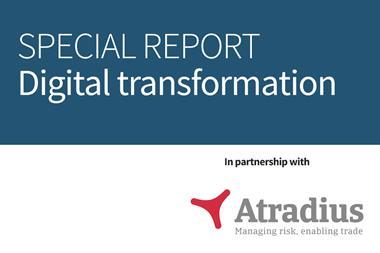Relationship. The word implies a long-term partnership based on openness and trust. Perhaps not a word that fits well with insurance. Or rather, a word that perhaps doesn't fit buyers' perception of the insurance industry.
The perceived wisdom in the current market is that relationships are not important, that the cost of insurance is beyond one individual provider and that too many unknowns – the cost of reinsurance and the weak market conditions in the capital markets, for example – make it difficult to control.
Insurance buyers, in other words, should not be surprised by the cycle, but should sharpen their skills in anticipating what's next.
Some, however, believe that it is time to introduce a new insurance model, which works through the cycle towards smoothing the volatility rather than being ruled by it. A model that segments customers according to buying behaviour and relationship rather than by product, type, size or industry.
Relationship management is the new paradigm. It is, however, not a new way of working. This has been an area of significant focus for Zurich over the past three years. The company represents "one face" to the customer and manages relationships by making the best of all its capabilities available globally to "manage customers' cost of risk".
Relationships are based on insurers developing the skills to understand what drives customers to make the decisions on dealing with their cost of risk. This is a two-way street, which makes demands on not only insurers, but customers as well. The key words here are integrity and consistency.
It is vital to have frank and open discussions with customers, whether they wish for a strategic or transactional relationship, while remaining true to a strategy of promoting broader, deeper and wider relationships with like-minded customers.
But what's in it for the customer?
Tim Atkin, president of Zurich Strategic Risk Management for UKISA and Asia,says relationship management is about horizontal management. "We are breaking down the silos of our business, which were a legacy structurebetter suited to the earlier part of last century.
"This is not a fad. We have, in our business model, separated underwriting and relationship management, but work as a team. There is a focus on both underwriting excellence and customer requirements.
"Significant investment is being undertaken in driving customer insight and underwriting excellence, enabling us to provide additional value to the relationship."
And this is where the discussion evolves into value for money rather than the lowest cost of risk. Having a closer understanding of a customer's challenges and needs allows many assumptions to be taken out of its decision-making.
It enables the creation of potentially longer term and more innovative solutions to the challenges that customers face in managing risk.
This allows customers to manage and mitigate their risk with confidence, continuity and predictability, albeit at a higher price, relative to the cheapest 'quote' that might be available at any given time. Transparency is important: customers need to be open and specific about the desired outcome of their risk financing strategy. Insurers need to reciprocate candidly.
Atkin says: "It is about trusting each other as business partners. It is not about the customer, the broker or the insurer using their relative strength at any given time to extract value from the other parties. It is a much more balanced relationship, a real partnership."
To get the most out of such a relationship, customers need to take a leadership role in these new types of conversations. They need to challenge insurers on how they do business. Customers themselves need to revisit their long-term commitment to their risk provider, if they want insurers to commit to the relationship as well.
Being customer-centric does not mean being all things to all people - this is not for everyone, or taking on risks that it does not understand or cannot analyse.
According to Atkin, it means using a scarce resource – intellect and capital – to best effect, "where we think we will get sustainable return, and that is by partnering with like-minded people".
This requires having insights into what customers want and value; insights into the changing nature of risk and being able to connect in the right way. "Insurance companies have mountains of valuable information, but rarely do they share it with their customers or transform the data into insightful knowledge," says Atkin.
The insurer is on a risk journey with its customers, moving to fundamentals. The fundamentals of running a business in a sound and intelligent way, delivering a profit and long-term sustainability, where innovating around a customer's desired outcomes is entirely consistent with that message, as opposed to a back to basics world, where basics means exactly that and innovation does not have a role to play.

















